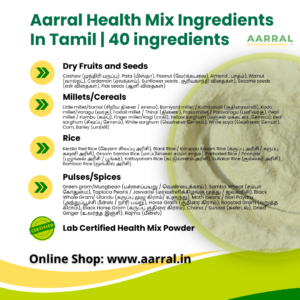Get to know Kerala’s districts and cities, including their population demographics to help you familiarize yourself with the region. Free Online Delivery.
Based on most recent update in January 2022, we can furnish you with a compilation of Kerala’s districts, including their respective population, area, and population density, according to the available data at that time. It’s important to note that these statistics may have undergone changes, and for the latest and most accurate information, consulting the most recent official sources is recommended.
List Of Districts In Kerala
Kerala is divided into 14 districts. Here is a list of districts in Kerala:
- Thiruvananthapuram (Trivandrum) – തിരുവനന്തപുരം
- Kollam – കൊല്ലം
- Pathanamthitta – പത്തനംതിട്ട
- Alappuzha (Alleppey) – ആലപ്പുഴ
- Kottayam – കോട്ടയം
- Idukki – ഇടുക്കി
- Ernakulam – എറണാകുളം
- Thrissur – തൃശ്ശൂർ
- Palakkad – പാലക്കാട്
- Malappuram – മലപ്പുറം
- Kozhikode (Calicut) – കോഴിക്കോട്
- Wayanad – വയനാട്
- Kannur – കണ്ണൂർ
- Kasaragod – കാസർഗോഡ്
District-wise Population, Area, and Density Overview
A District-wise Population, Area, and Density Overview provides a comprehensive snapshot of demographic and geographic characteristics at the district level within a specific region or country. Here’s a breakdown of the key components:
- Population:
- Total Population: This is the count of people residing in each district. It’s a fundamental demographic indicator and is often broken down by gender, age groups, and sometimes socio-economic factors.
- Population Growth Rate: This indicates the percentage increase or decrease in the population of a district over a specific period, typically expressed annually.
- Area:
- Total Land Area: This represents the entire geographical area covered by a district, usually measured in square kilometers or square miles.
- Land Use Distribution: Information on how the land in the district is utilized, whether it’s urban, agricultural, forested, or other classifications.
- Density:
- Population Density: Calculated by dividing the total population by the land area, this figure represents the number of people per unit of land area (e.g., people per square kilometer).
- Urban and Rural Population: Differentiating between urban and rural areas helps understand the distribution of the population and density within the district.
- Demographic Breakdown:
- Age Distribution: Information on the distribution of population across various age groups.
- Gender Distribution: The proportion of males and females in the population.
- Ethnic or Cultural Composition: If applicable, details about the ethnic or cultural diversity within the district.
- Trends and Patterns:
- Historical Data: Comparisons with previous years or decades to identify trends in population growth, changes in land use, and shifts in population density.
- Migration Patterns: Information on in-migration and out-migration, which can provide insights into factors influencing population changes.
- Implications and Analysis:
- Infrastructure and Resource Planning: Understanding the population and density helps in planning infrastructure, services, and resource allocation.
- Socio-Economic Impacts: Analyzing demographic and geographic data can reveal the social and economic dynamics of a district, aiding in policy formulation and development planning.
Refer the detailed District-wise Population, Area, and Density Overview below:
Thiruvananthapuram (Trivandrum) District
- Established on November 1, 1956
- Population: Approximately 3.3 million
- Area: 2,192 square kilometers
- Population Density: About 1,509 persons per square kilometer
Kollam District
- Established on July 1, 1949
- Population: Approximately 2.6 million
- Area: 2,491 square kilometers
- Population Density: About 1,045 persons per square kilometer
Pathanamthitta District
- Formed on November 1, 1982
- Population: Approximately 1.2 million
- Area: 2,637 square kilometers
- Population Density: About 474 persons per square kilometer
Alappuzha (Alleppey) District
- Established on August 17, 1957
- Population: Approximately 2.1 million
- Area: 1,415 square kilometers
- Population Density: About 1,499 persons per square kilometer
Kottayam District
- Formed on July 1, 1949
- Population: Approximately 2.3 million
- Area: 2,208 square kilometers
- Population Density: About 1,037 persons per square kilometer
Idukki District
- Established on January 26, 1972
- Population: Approximately 1.1 million
- Area: 4,358 square kilometers
- Population Density: About 253 persons per square kilometer
Ernakulam District
- Formed on April 1, 1958
- Population: Approximately 3.5 million
- Area: 2,529 square kilometers
- Population Density: About 1,387 persons per square kilometer
Thrissur District
- Established on July 1, 1949
- Population: Approximately 3.3 million
- Area: 3,032 square kilometers
- Population Density: About 1,079 persons per square kilometer
Palakkad District
- Formed on January 1, 1957
- Population: Approximately 2.8 million
- Area: 4,480 square kilometers
- Population Density: About 627 persons per square kilometer
Malappuram District
- Established on June 16, 1969
- Population: Approximately 4.5 million
- Area: 3,550 square kilometers
- Population Density: About 1,270 persons per square kilometer
Kozhikode (Calicut) District
- Formed on July 1, 1949
- Population: Approximately 3.6 million
- Area: 2,345 square kilometers
- Population Density: About 1,532 persons per square kilometer
Wayanad District
- Established on November 1, 1980
- Population: Approximately 8,16,558
- Area: 2,131 square kilometers
- Population Density: About 383 persons per square kilometer
Kannur District
- Formed on January 1, 1957
- Population: Approximately 2.8 million
- Area: 2,966 square kilometers
- Population Density: About 941 persons per square kilometer
Kasaragod District
- Established on May 24, 1984
- Population: Approximately 1.4 million
- Area: 1,992 square kilometers
- Population Density: About 717 persons per square kilometer
What is the overall population of Kerala?
The total population of Kerala was approximately 35 million. However, please note that population figures are subject to change due to factors such as birth rates, death rates, and migration. For the most up-to-date and accurate population information, I recommend checking the latest data from official sources, such as the Census of India or the Kerala State Government.
Cities in Kerala India
Kerala, a state in southwestern India, is known for its natural beauty, diverse culture, and high literacy rate. Some of the prominent cities in Kerala include:
- Thiruvananthapuram (Trivandrum): The capital city of Kerala, located in the southern part of the state. It is known for its historical significance, government institutions, and cultural heritage.
- Kochi (Cochin): A major port city on the west coast of Kerala, known for its bustling seaport, historical landmarks, and vibrant multicultural atmosphere.
- Kozhikode (Calicut): Located on the Malabar Coast, Kozhikode is known for its rich history, trade, and cultural heritage. It was an important spice trade center in ancient times.
- Kollam: Situated on the banks of Ashtamudi Lake, Kollam is known for its historic port and cashew processing industry. It is also a gateway to the backwaters.
- Thrissur: Often referred to as the cultural capital of Kerala, Thrissur is known for its festivals, temples, and cultural events. The Thrissur Pooram festival is one of the most famous in the state.
- Kannur: Located in the northern part of Kerala, Kannur is known for its pristine beaches, historical forts, and traditional performing arts.
- Kottayam: Known for its scenic landscapes, Kottayam is often called the “Land of Letters, Latex, and Lakes.” It has a significant presence of educational institutions.
- Alappuzha (Alleppey): Famous for its backwaters, houseboats, and boat races, Alappuzha is a major tourist destination in Kerala.
- Palakkad: Known for its historical monuments, Palakkad is often referred to as the “Granary of Kerala” due to its extensive paddy fields.
- Malappuram: Located in the northern part of Kerala, Malappuram is known for its cultural diversity, historical sites, and educational institutions.
Kerala Online Shopping, Free Online Delivery in Kerala
Aarral.in is your trusted partner for online shopping in Kerala India, where you can discover the best deals and experience unmatched convenience. Embrace the future of shopping by browsing our extensive catalog, benefiting from exclusive discounts, and enjoying hassle-free home delivery.
With Aarral.in, you have the power to shop smart and shop stress-free. So, don’t wait any longer. Visit our online shop today to experience the ultimate in online shopping in Kerala, India. Join the countless satisfied customers who have already chosen Aarral.in for their shopping needs. We look forward to serving you and making your online shopping experience in Kerala truly exceptional. Happy shopping!



























Leave a Reply